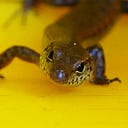Member-only story
Sightlines
Keeping an eye on the birds
There is a similarity between using a camera and using a gun. Not only does the term ‘shooting’ cover both activities, but in photography, as with firearms, you need to know what’s behind your target.
Since my neighbours on one side have pruned all the trees on their boundary, their house is no longer screened by leaves. Nor is the one beyond that. The people at the back have also gone wild with a chainsaw, cutting down a stand of gum trees and ringbarking others. I feel as if I’m living on a short-grass prairie. (I had considered comparing it to a savanna, but savannas have trees. Not many, but more trees than I have around me at the moment.)
This means that if I point my camera or binoculars in that direction, their property is likely to be in shot. No one likes a telephoto lens directed at them as they go about their daily activities and I don’t want irate neighbours and their houses as backdrops to my bird photos, unless there is a good compositional reason. To avoid this, my bird photography is constrained to a much smaller area than the time I call BC — before chainsaws.
With the decrease in trees, the bird fauna has changed. This is also partly because we have moved into the dry season; it is hot and dry and some species, like the Australian King-parrots, have moved back into the forest or up to…
